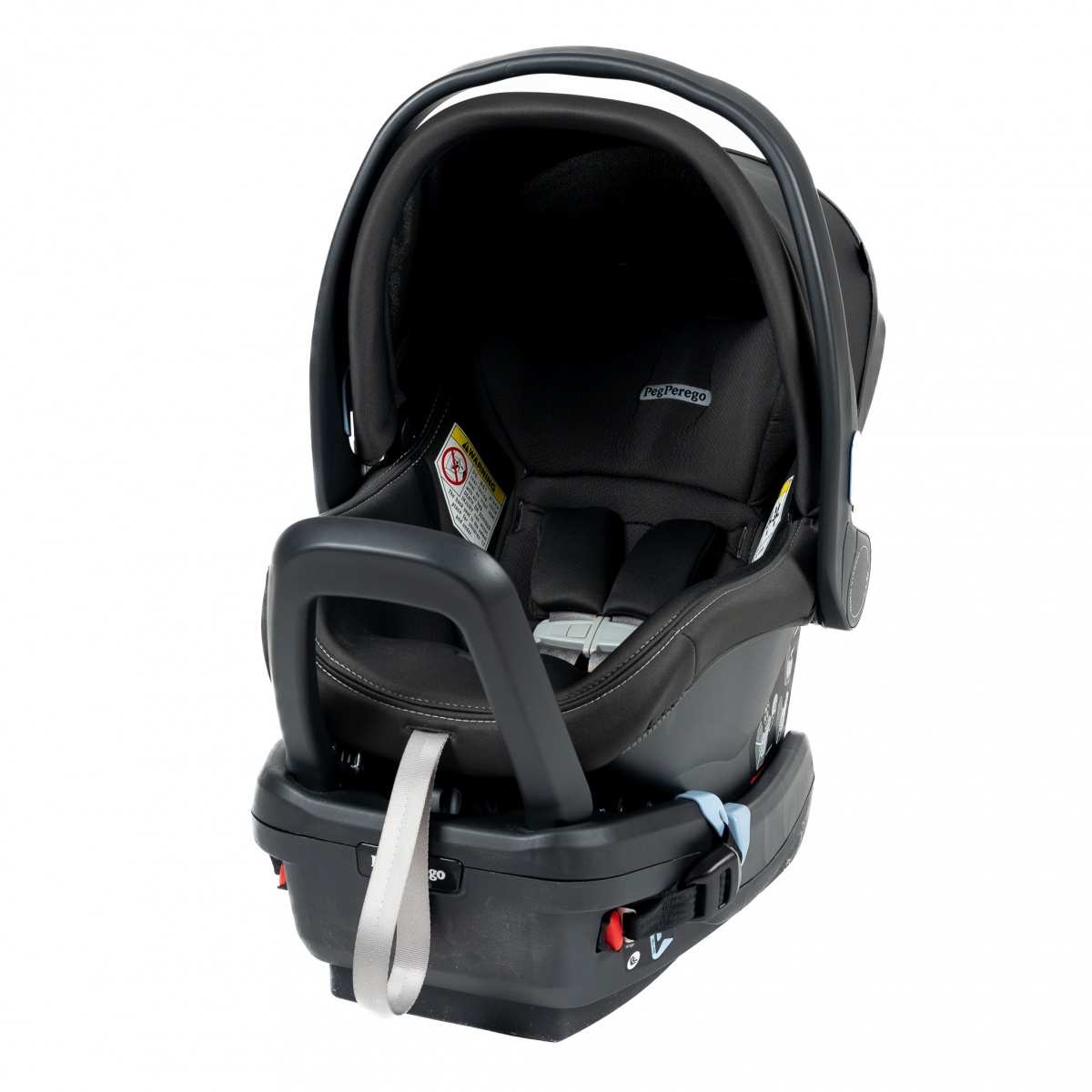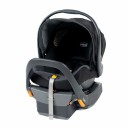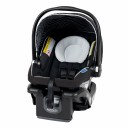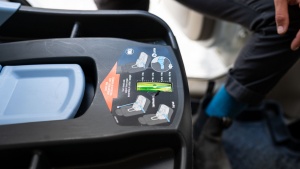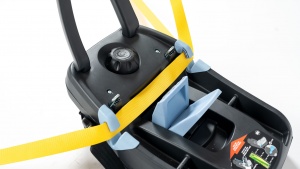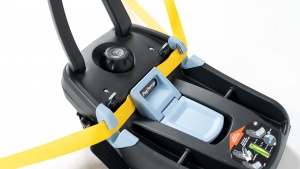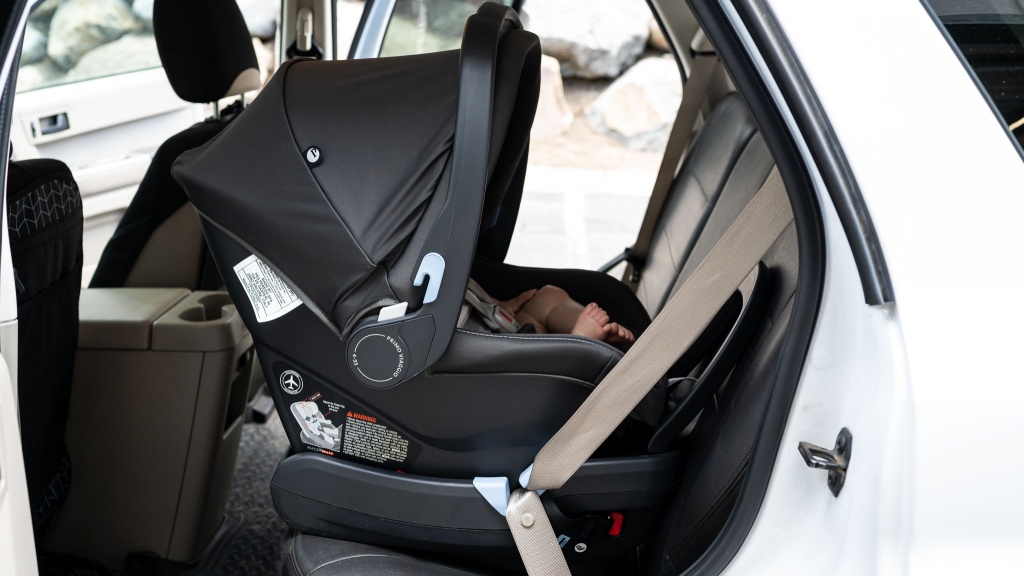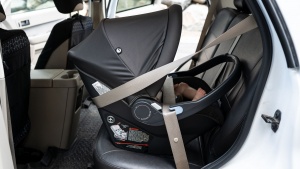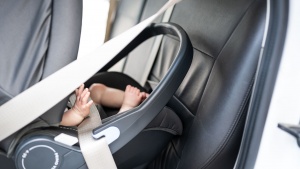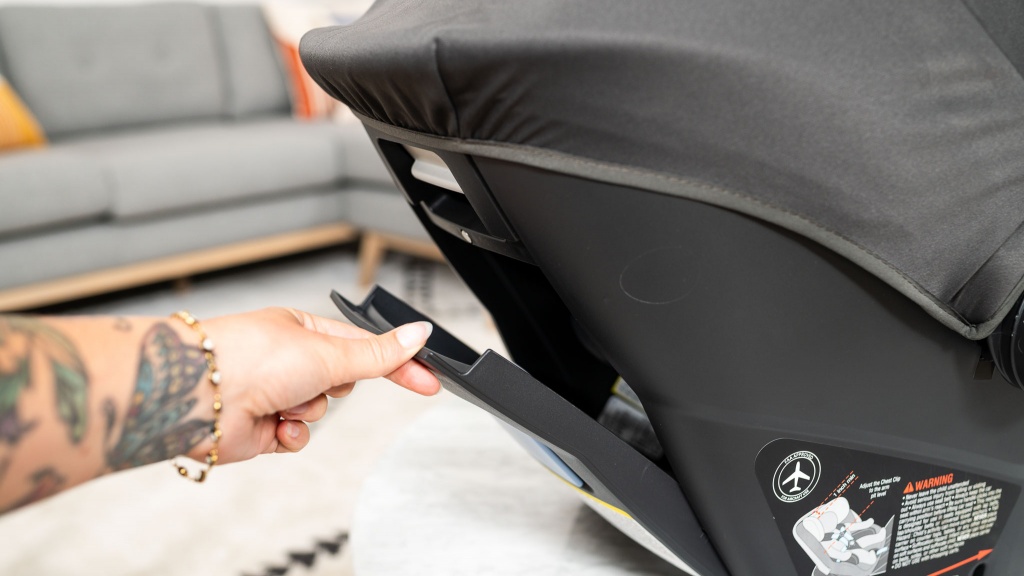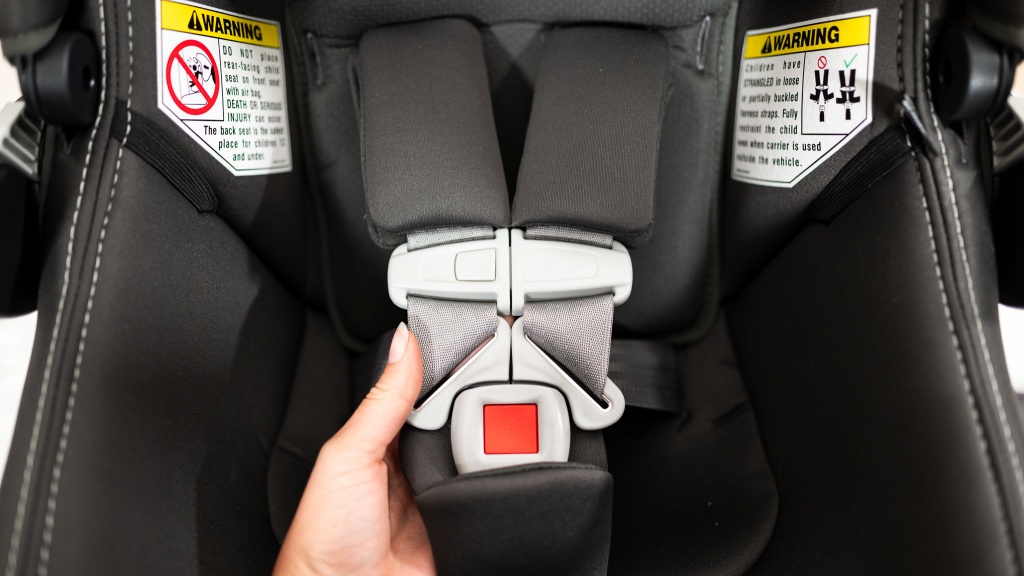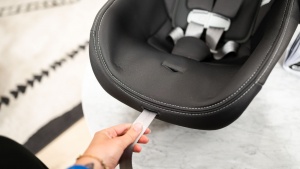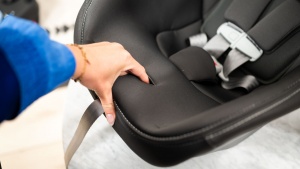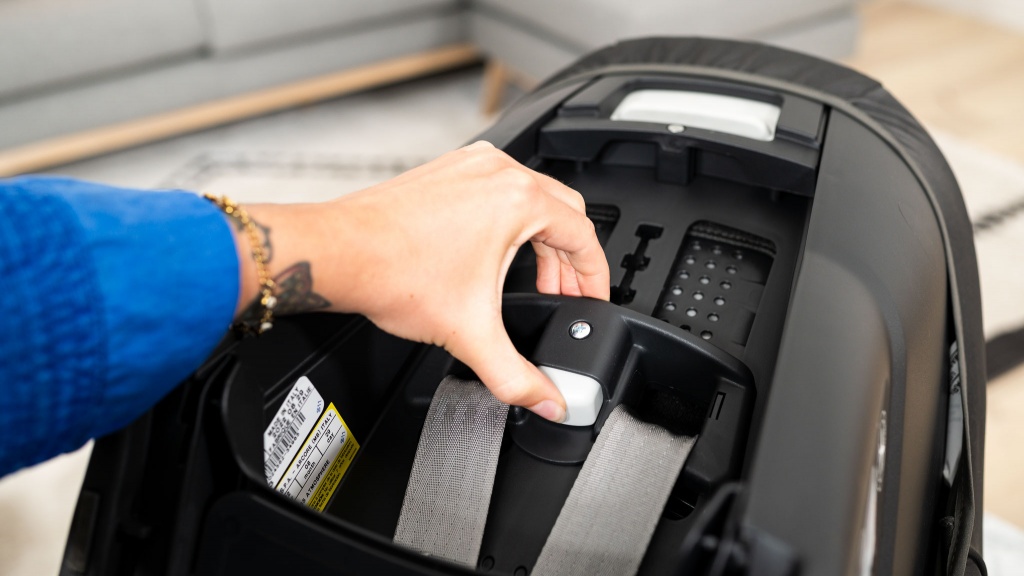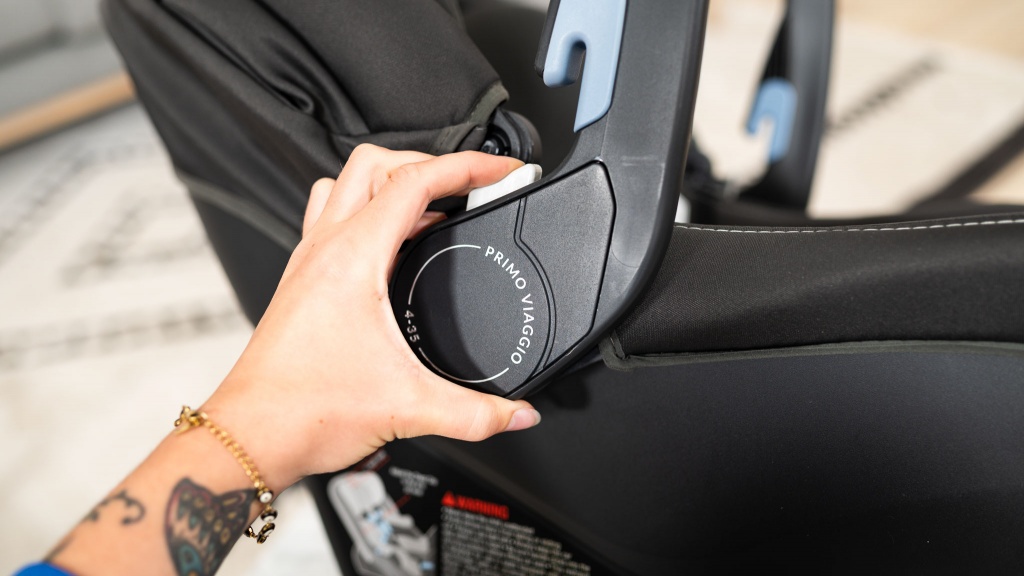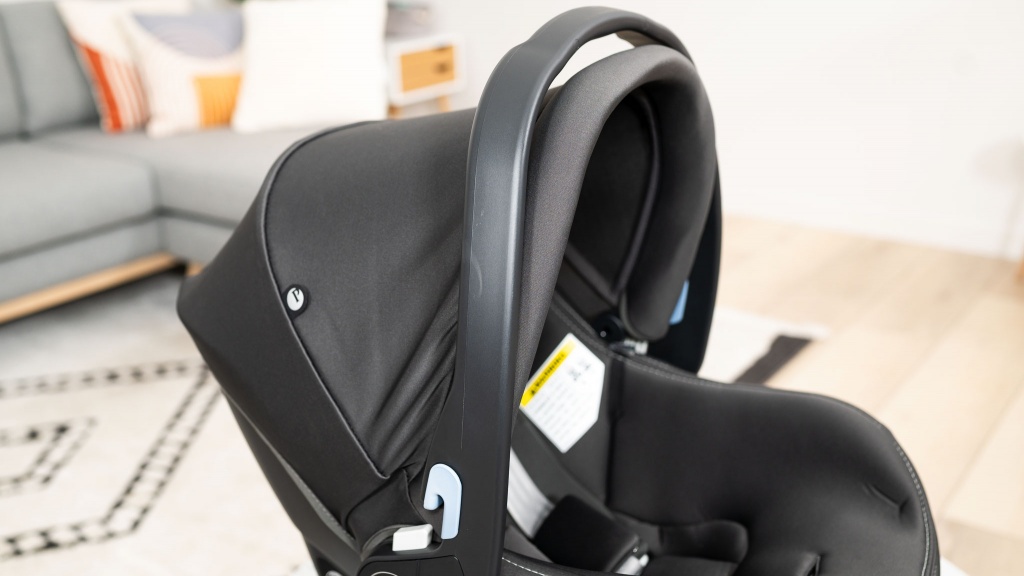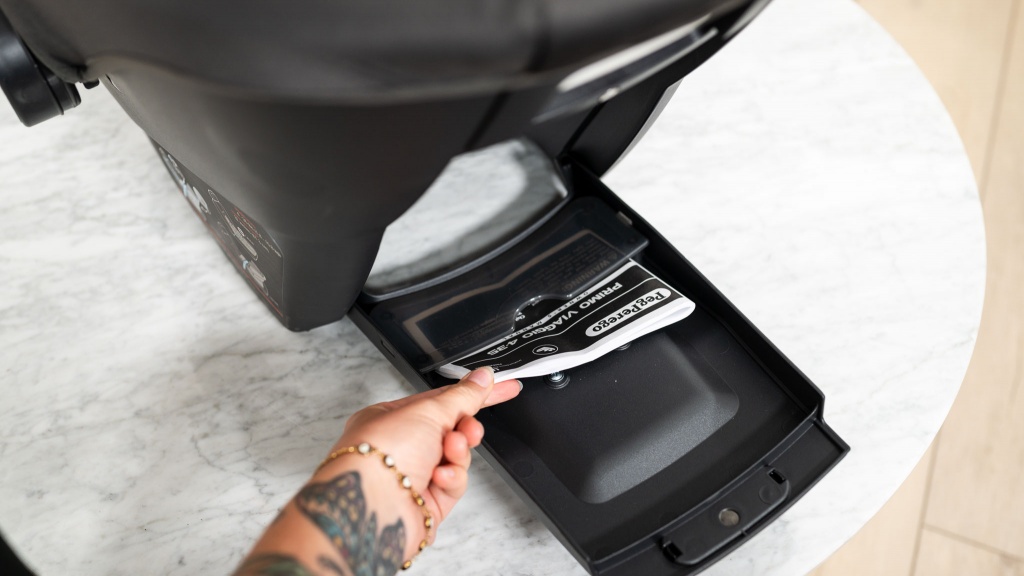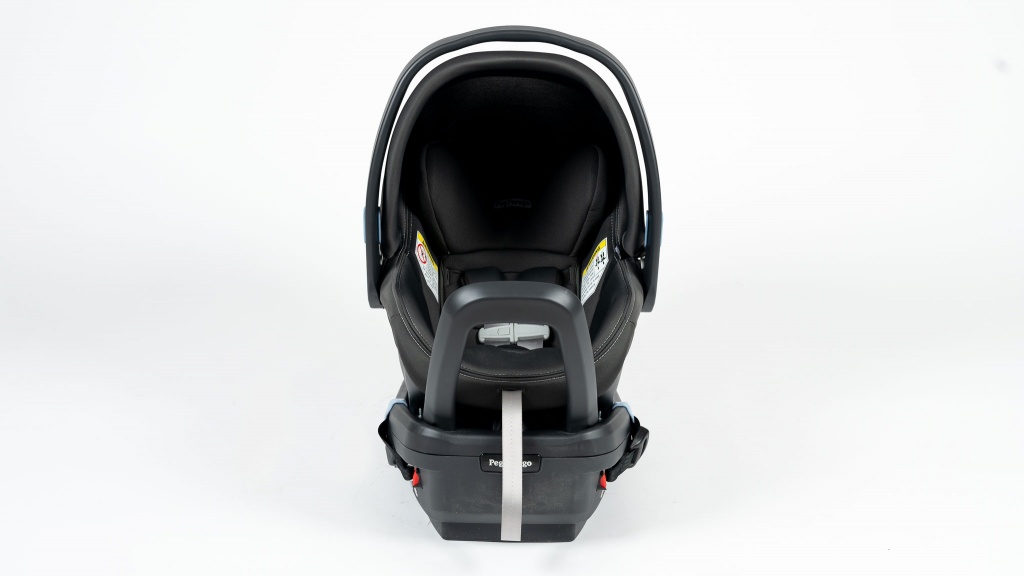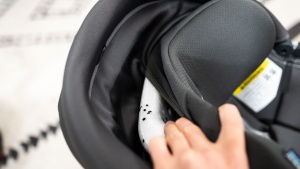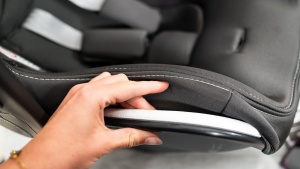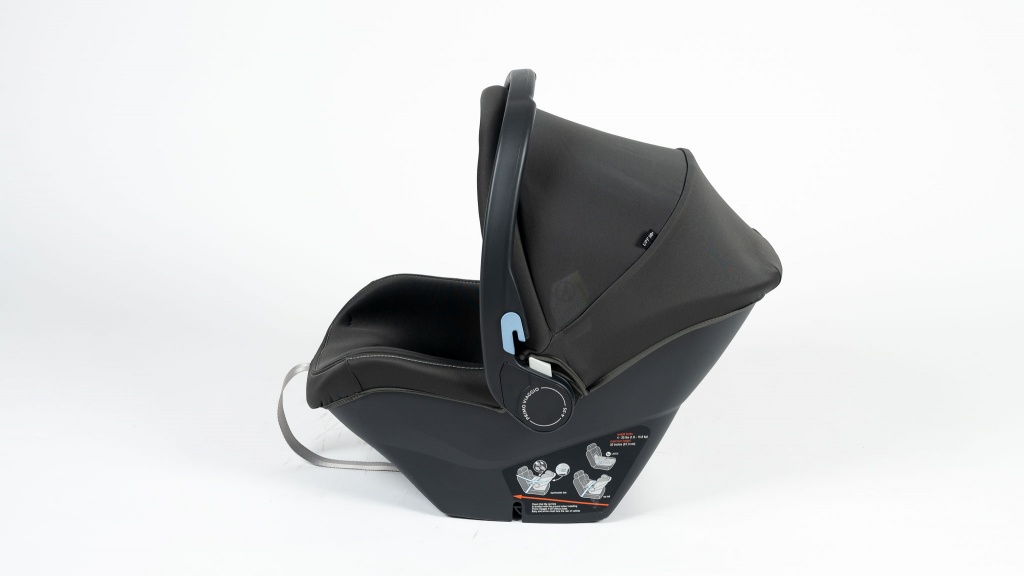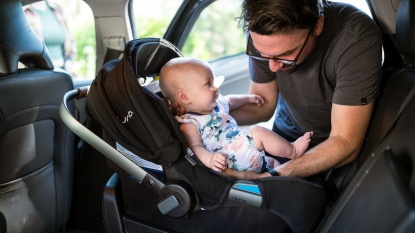Peg Perego Primo Viaggio 4-35 Review
Our Verdict
Compare to Similar Products
 This Product
Peg Perego Primo Viaggio 4-35 | |||||
|---|---|---|---|---|---|
| Awards | Best Car Seat with High Stroller Compatiblity | Best Crash Test on the Tightest Budget | |||
| Price | $300 List | $270 List $229.99 at Amazon | $230 List $209.99 at Amazon | $120 List $119.00 at Amazon | $110 List |
Overall Score  |
|||||
| Star Rating | |||||
| Bottom Line | Below-average performance in most metrics make it an unimpressive seat overall | Great overall seat with high stroller compatibility and better than average results all around | Not as comfy for little ones, but the crash test results are impressive | If your budget is small, this seat has impressive crash test results | Hard to install and more challenging to use overshadows the better crash test analysis |
| Rating Categories | Peg Perego Primo Vi... | Chicco KeyFit 35 | Chicco KeyFit 30 | Graco SnugRide 35 L... | Baby Trend EZ Flex-Loc |
| Crash Test (40%) | |||||
| Ease of Install - LATCH (20%) | |||||
| Ease of Install - Belt (10%) | |||||
| Ease of Install - w/o Base (5%) | |||||
| Ease of Use (15%) | |||||
| Comfort/Quality (5%) | |||||
| Weight/Size (5%) | |||||
| Specs | Peg Perego Primo Vi... | Chicco KeyFit 35 | Chicco KeyFit 30 | Graco SnugRide 35 L... | Baby Trend EZ Flex-Loc |
| Minimum Weight | 4 lbs | 4 lbs | 4 lbs | 4 lbs | 4 lbs |
| Maximum Weight | 35 lbs | 35 lbs | 30 lbs | 35 lbs | 30 lbs |
| Maximum Height | 32 in | 32 in | 30 in | 32 in | 30 in |
| Measured Carrier-Only Weight | 10.0 lb | 10.4 lb | 9.8 lb | 7.6 lb | 8.7 lb |
| Built in Lock Off | Yes | Yes | Yes | No | No |
| Method To Adjust Harness Shoulder Height | Non-rethread | Non-rethread | Rethread | Rethread | Rethread |
| Belt Routing Style | European | European | American | American | American |
| Anti-rebound Bar | Yes | Yes | No | No | No |
| Load Leg | No | No | No | No | No |
| Shoulder Harness Positions | 5 | 5 | 3 | 4 | 3 |
| Crotch Strap Positions | 1 | 1 | 1 | 2 | 1 |
| Number of Recline Positions | Infinite | 6 | 5 | 4 | 4 |
| Locking Handle Positions | 5 | 3 | 3 | 4 | 4 |
| Allowed Handle Positions For Auto Travel | Position C for base Install (even with the top of the seat), Position A for Seat Only Install (all the way forward) |
Any position | Any position | Any position | Not listed |
| Level Indicator On Base | Bubble, in middle | Bubble, both sides | Bubble, both sides | needle, one side | On Infant Seat, one side only |
| Level Indicator On Seat | Line on Decal | Line on Decal | Line on Decal | Line on Decal | Hanging Indicator |
| Aircraft Certified | Yes | Yes | Yes | Yes | Yes |
Our Analysis and Test Results
Peg Perego is an Italian company that started in 1949. Giuseppe Perego founded the company with a single-baby carriage. Peg's popularity continued to rise during the 60s with the development of strollers and high chairs. In the 70s, Peg launched some of the travel strollers and toddler ride-on toys of the time. The 80s saw the first Pilko options and electric riding toys. Peg Perego works to design innovative and stylish products.
Performance Comparison
Crash Testing
The Peg earned a crash test analysis score just below the average for the group. While the results were acceptable, and it has passed the federal guidelines for safety, it did not perform well enough in our testing to beat higher-scoring seats.
The HIC sensor results are somewhat higher than the average seat, indicating that more forces impacted the crash test dummy than on other seats. While it is still within an acceptable range and not the highest in the group, some competitors are lower. The sensor results that lowered the analysis score was the chest clips sensor. This seat's crash test sensor results for this area were higher than the average, with a result close to the highest (lower is better) than the competition. All of the seats in this review are considered safe, but we are looking for those that are better than the average option in this review. Overall, the Peg didn't beat competitors, with a below-average analysis.
Ease of Installation LATCH
While it should be the easiest, the LATCH install is only second best for this Peg seat. However, it scored below the average for the group. It was not as easy as LATCH should be, considering it was developed to help create a foolproof method for installation with fewer opportunities for mistakes. This seat has an anti-rebound bar but no load leg.
Installation is average at best with the LATCH. The connectors come out of the side of the base, and they are the push style with a small red release button we didn't love. They click easily in place. Getting the LATCH strap tight enough and leveling it took more effort than it should. We had to use our knee in the base, and this was harder because the level indicator is in the center where you'd want to put your knee. The recline adjustment knob is easy to use, but if you need big adjustments, it will take time and could fatigue your wrist and fingers. However, we do like this method's precision and infinite options, so perhaps it is a tradeoff.
While tightening, we also struggle to keep the anti-rebound bar in the correct position. The strap tightening is in the opposite direction than most and did not feel ergonomic or natural to us. The lock-off didn't offer much tensioning, and we think it would be easier if it offered some assistance in tightening the strap. Given that some competitors are so easy to tighten or don't require any tightening, it is a big minus for us that this takes so much effort. It passed the wiggle test in both test cars, and we think the anti-rebound bar helps create a sturdy feel.
Recline Adjustment
The recline adjustment is a twisting knob on the end of the Peg base. It is easy to use, though somewhat arduous if you need to make a significant change that requires continued turning. The angle adjustment is infinite, and unlike others with limited options, it is more likely you will find the right angle for your car. The angle level is a bubble style and in the center of the base.
Ease of Installation - Belt
Installation using the vehicle belt with the base is the most difficult for this Peg, and it also scores below average in this metric for the group. This base has a belt lock-off and no tensioner, so we had difficulty getting the belt tight enough, and the lock-off felt like it wasn't doing its job as well as some others we've used. The pathway is color-coded and open for easy visibility.
Installing the base with the vehicle belt should be pretty straightforward. It is an obvious pathway with no holes for threading. The belt lock-off is centrally located, and it is easy to get the belt flat inside the lock off and close the lock off. However, the lock-off isn't the best and doesn't function as a tensioner, so you need to get the belt tightened as much as possible before pressing it down. We struggled to tighten it enough with the anti-rebound bar and at the proper angle.
While it was easier than the other Peg seat with the load leg to mess with, it was still more challenging than it would have been if there had been a tensioner. We really struggled to get the belt tight enough and tried all variations to make it work. It wasn't as stable when fully installed as we'd like, but it passed the wiggle test.
Ease of Installation - w/o the Base
Installing the Peg without the base is the easiest method for this seat, but it is still largely average compared to other infant car seats in this review.
The installation uses the European belt pathway with the lap portion across the foot of the carrier and the shoulder belt wrapped around the back. The handle on the carrier flips down against the vehicle seat, and the color-coded slots on the handle help guide your belt threading. It has a level line on a side decal sticker for angle confirmation.
This is a slightly wider seat, and the shoulder portion of the vehicle belt almost felt too short, but we got it around in the end. The belt pathway has slots on the handle, so you must rotate to the forwardmost position near the vehicle seat to make the threading work. Everything is really visible and has color coding where you need to go. The back clip doesn't naturally want to accept the vehicle belt, so you have to finagle it in a bit, but it isn't a big deal. Tightening wasn't a problem given the amount of belt we used, and it felt snug with limited wobble. It seems like the handle helps stabilize everything by pressing into the vehicle seat back.
Ease of Use
While this Peg is easier to use than the other Peg we tested, it scored below average for the group. This Peg has some everyday functions and features that are more difficult to use than the competition.
Buckle
The buckle button is hard to press, and our tester felt it was a significant chore that left her thumb tender. If you have finger or thumb issues, testing this option before committing to this seat would be a good idea. The side prongs don't pop out automatically, so you need to pull them out yourself. The prong slits are slightly less wide than the webbing of the shoulder straps so that the straps can get somewhat bunched up, and it feels like such a strange oversight.
The chest clip has the release button on the opposite side of most of the competition, which was weird for us at first, but we suspect most parents won't know the difference, having not used 17 car seats in a row. Our feeling is this style is better for left-handed people.
Harness Tightening/Loosening
The chest clip slides easily when you tighten the straps, and the shoulder straps do not cause a hindrance. The tightening strap is on the edge near the rim and pulls easily without any hesitation. The slit for the button is located higher up, and the slit doesn't really align with the button the way we'd like, so you have to sort of search somewhat. The button works well.
Harness Adjustment
This carrier has a non-rethread style harness height adjustment. It is located behind a plastic flap on the back of the carrier. It is easy to access, covered to avoid grime build-up, and works smoothly without a hiccup.
Carrier to Base Connection
Placing the carrier on the base is harder than most. There is no indication when you have done it correctly, but we didn't see any way to do it wrong either. The release lever is difficult to grasp and squeeze and was hard for the palm of our tester to use. It isn't as ergonomic as some, and a pressure point hits us in the palm. A second tester with larger hands thought it was as bad as our petite tester. The back of the canopy slips down and conflicts with the release handle. We had to roll the carrier back somewhat to get it off the front connection bars to remove the carrier once we finally got the release lever depressed far enough.
Handle
The buttons on the handle are annoying to press, but we love that the handle can rotate without bringing the canopy with it. In our opinion, the buttons are hard to press, and a finger workout and the handle joint is curved, creating a harsh edge. We used two fingers on each button, but it would be nice if there were room for three, given the pressure required to press them down.
Canopy
The canopy is only so-so and doesn't extend as far as we'd like, especially if you plan to use this carrier with a stroller. There are only two modes for this canopy: open and closed.
LATCH and Manual Storage
The Peg manual is located on the back of the carrier in a compartment. This compartment has a flimsy plastic door that often fell off during testing. LATCH storage is cubbies on the base just below the rim, so you do not need to turn the base over to get to them. They are easy to push in and take out; you just need to ensure the straps are long enough to get the right angle.
Comfort/Quality
The Peg did not score well in our tests for comfort and quality, with a total score in this metric below the average for the group. While the seat looks nice, it failed side-by-side comparison tests to keep up with seats offering more padding, softer fabric, or higher-quality materials and designs.
Fabric and Padding
Most of the seat fabric is relatively soft and skin-friendly, but sadly, the head and infant insert fabric is rougher and somewhat itchy when we rub them on our cheeks. The material is breathable and could be why this choice was made to prevent sweaty heads, but it feels like a misstep to us to put rougher fabric near newborn skin.
The Peg doesn't offer much comfort padding outside the EPS impact foam found in most seats. It has multi-stage padding through an infant insert and stage two seat padding for little tushies. The infant insert is better than some we've seen, but the extra padding can make it more challenging to get little ones in the seat correctly. There is some additional comfort padding in the head area, but it doesn't have much give.
Handle and Canopy
The canopy is only medium in size and below average for the group. This canopy can only be fully opened or closed with no midway point options. Its thin fabric is UPF 50+ and see-through. It does not filter out light so much as it dims it. The handle and canopy are virtually the same height, so your fingers will rub the canopy if the handle is upright when the canopy is open.
Shell
The shell is fairly smooth and easy to wipe clean. We didn't see much potential for grime collection, but the stickers could take a beating over time as they are low and near where the carrier inserts onto the base.
Weight/Size
The Peg Perego earned one of its highest metric scores for weight. The carrier weight is neither prohibitively heavy nor is it lightweight. With a score just above the average for the group, the Peg carriers weigh in at 10 lbs. The lightest seat is under 8 lbs in this group, while the heaviest is more than 17 lbs. Most options were closer to 10 lbs.
Should You Buy the Peg Perego?
The Peg Perego non-Nido is not a tester favorite and didn't shine in any key metric. With below-average crash test analysis and the difficulties we had during LATCH installation, it is hard to recommend this seat for any family. While most Peg strollers require a Peg seat if you plan to pair them, this is not the one we'd choose, and we think there are better things to be had in our lineup.
What Other Infant Car Seat Should You Consider?
If you must have a Peg seat to pair with a Peg stroller, then the Peg Perego Primo Viaggio 4-35 Nido would be the one we'd choose. With higher crash test analysis results, we think it is the better Peg. While it still struggles in LATCH installation and others, the crash test results at least make it stand out if you only compare the two seats. If your goal is a standout seat in all metrics or the absolute best in crash test results, then the Clek Liing is our favorite. The Clek excels in almost every metric and provides better crash test results and a rigid, easy-to-install LATCH mechanism. We think most families will prefer the quality, comfort, and ease of installation over either Peg Perego option.


